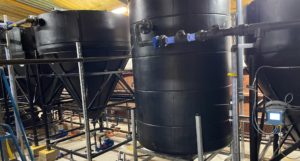University of Exeter installs 3D sculpture to raise awareness of research into parasites
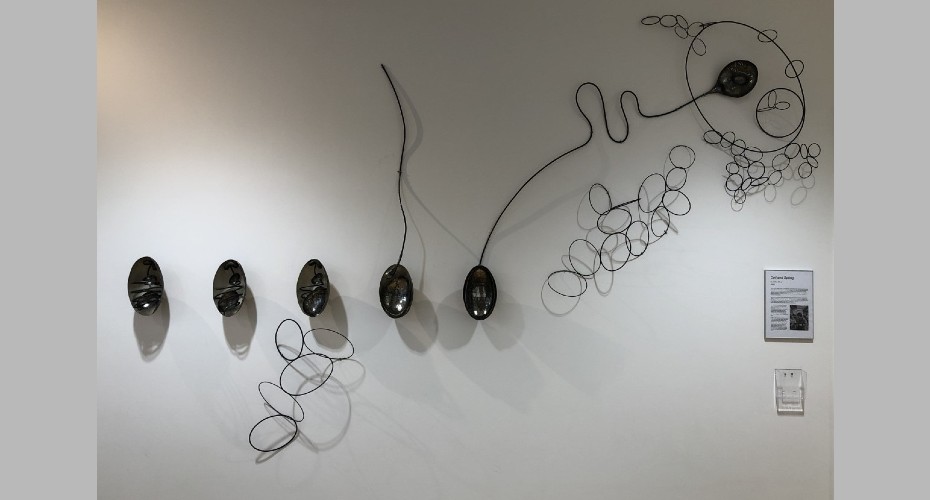
Coil and Spring Project by Jacky Oliver in LSI Exchange Hub
A fascinating 3D sculpture has been installed at the University of Exeter’s Living Systems Institute, helping to raise awareness of its research on microsporidia.
Microsporidia are important pathogens infecting a diversity of animals including humans, honeybees, and farmed fish and shrimp, causing disease and, in some cases, death. Microsporidia parasites are found as dormant spores in the environment, which when eaten by a host “germinate”. Despite their importance, these parasites are not well-known by the general public, with most people never having heard of them.
In November last year, the university issued a callout to commission an artist to create an installation that will inform the public about microsporidia and parasitism more generally and highlight the scientists’ research. The scientists were aided throughout this commissioning process by the university’s Arts and Culture department which provided expert advice.
The chosen sculpture, ‘Coil and Spring’ by artist Jacky Oliver, has now been installed in the university’s Living Systems Institute Exchange Hub.
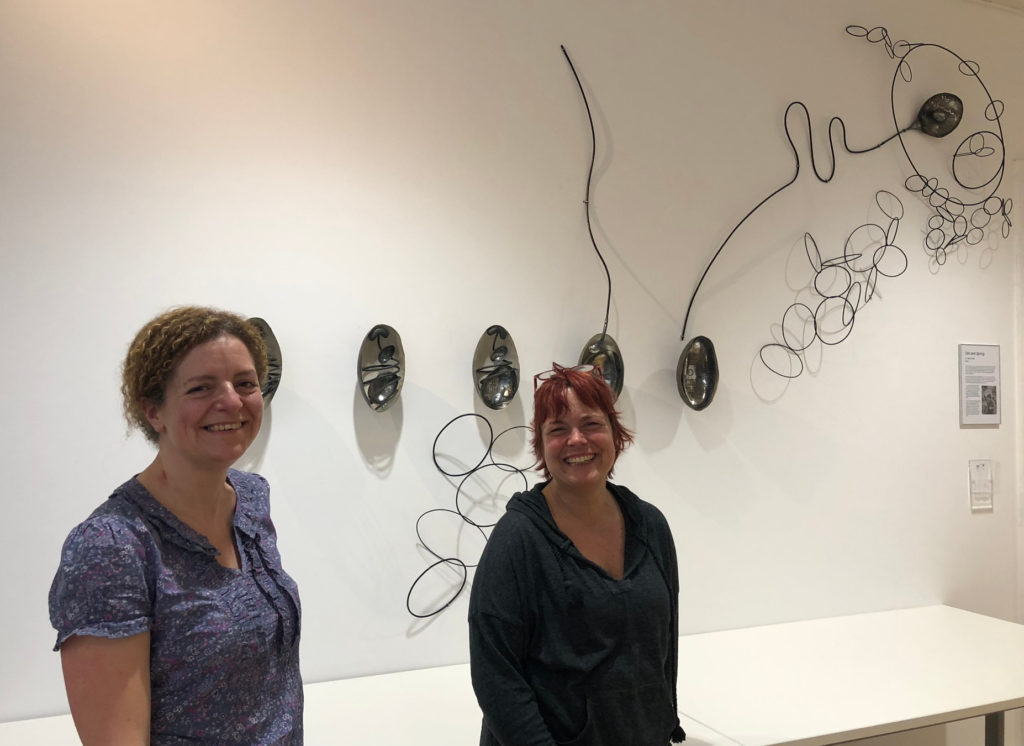
Jacky Oliver creates work for exhibitions, commissions and residencies throughout the UK. Since graduating from the Royal College of Art, Jacky’s work has ranged in scale from small handheld objects through to large-scale architectural pieces, utilising a variety of metalwork skills and techniques.
Each project is completely unique, considering a variety of subjects, the final outcomes determined by a journey of exploration. Exploring new subject matter and developing ways to communicate narratives to others is a key part of Jacky’s practice. With previous commissions ranging from bee keeping, D Day, the carbon footprint of the food we eat, the 100th anniversary of Armistice Day, through to the role of the horses in agriculture, Jacky’s work often involves searching through archives or interviews.
The ’Coil and Spring’ project allowed Jacky to work with the team at the University of Exeter, who shared their knowledge generously, to give Jacky a comprehensive insight into the subject. The fascinating stages of development of the microsporidia spores as they germinate inspired this piece.
A visit to the laboratory allowed Jacky to see the spores first hand and have discussions about the effects the parasite has on animals, and how the parasite works. These explanations, supported by numerous diagrams which showed the striking visual development of the spore as well as lab notes, have all informed the final outcome to create a multi-layered piece.
In her workshop Jacky followed her own series of experiments, this time how to present aesthetically and technically different aspects of the story of microsporidia. The final outcome makes use of the traditional silversmithing process of raising, transforming a flat sheet of metal into a dished form, combined with soldering, etching, piercing and patination.
These pieces have been themselves a series of experiments; the initial idea was to translate a graphic diagram of the spores in wire. Through tests, discussion, and reflection, a piece has developed that has embraced many more of the facets of these fascinating spores. The forms and words are there to themselves provoke dialogue and hopefully encourage more people to consider microsporidia parasites.
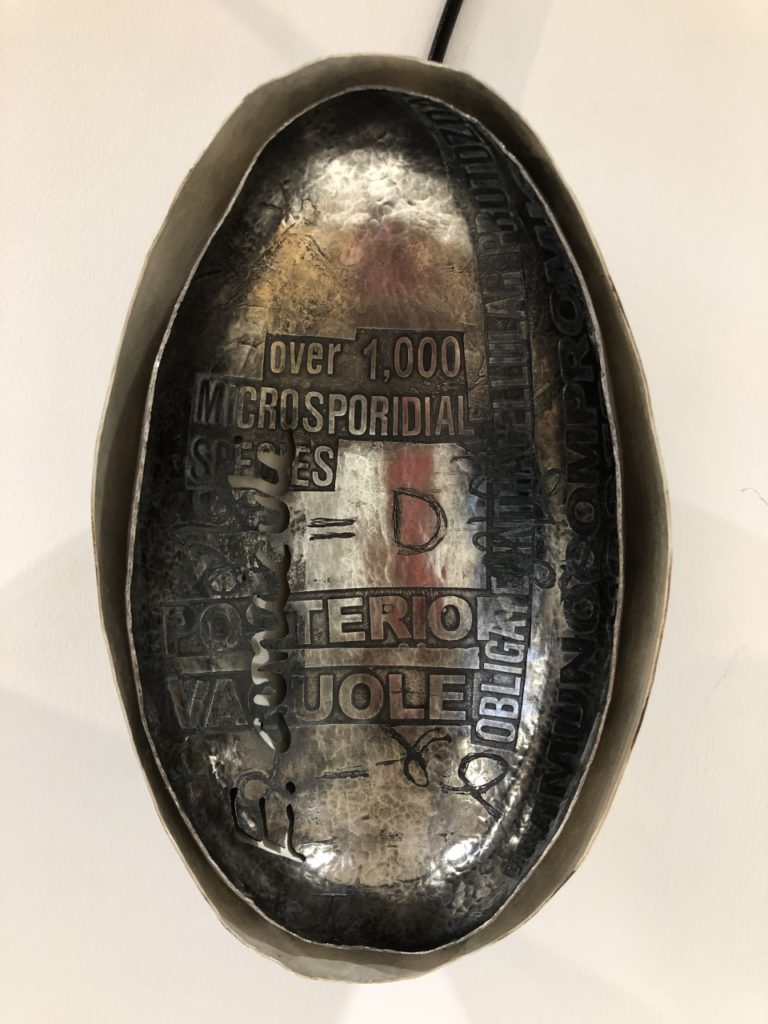
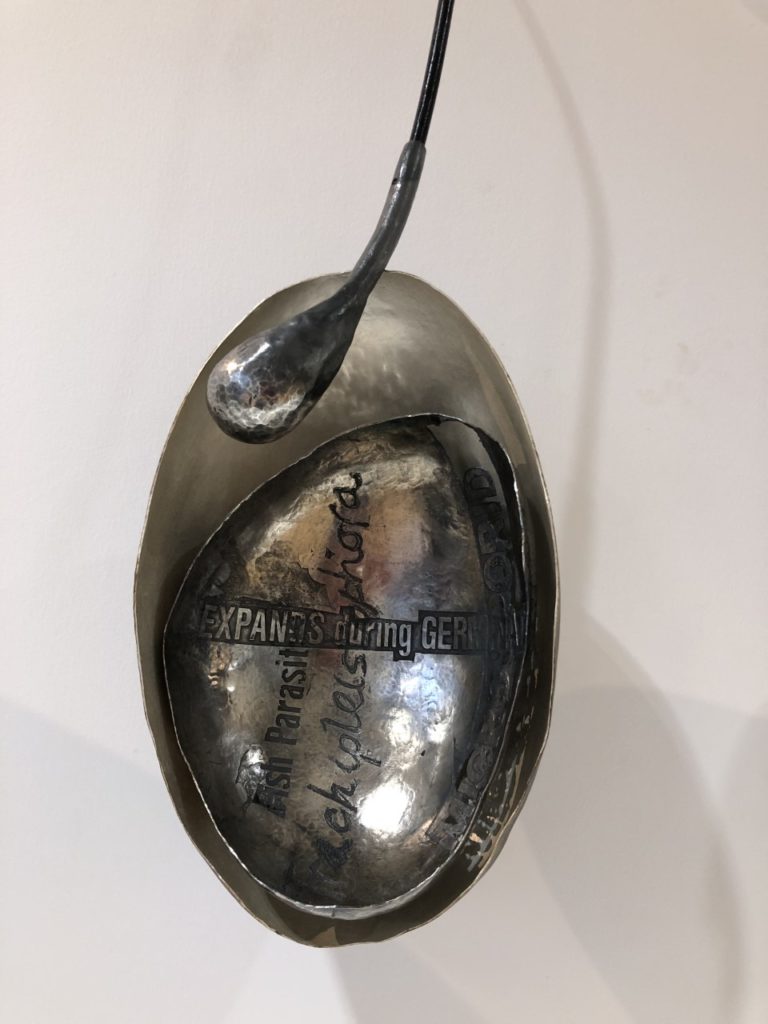
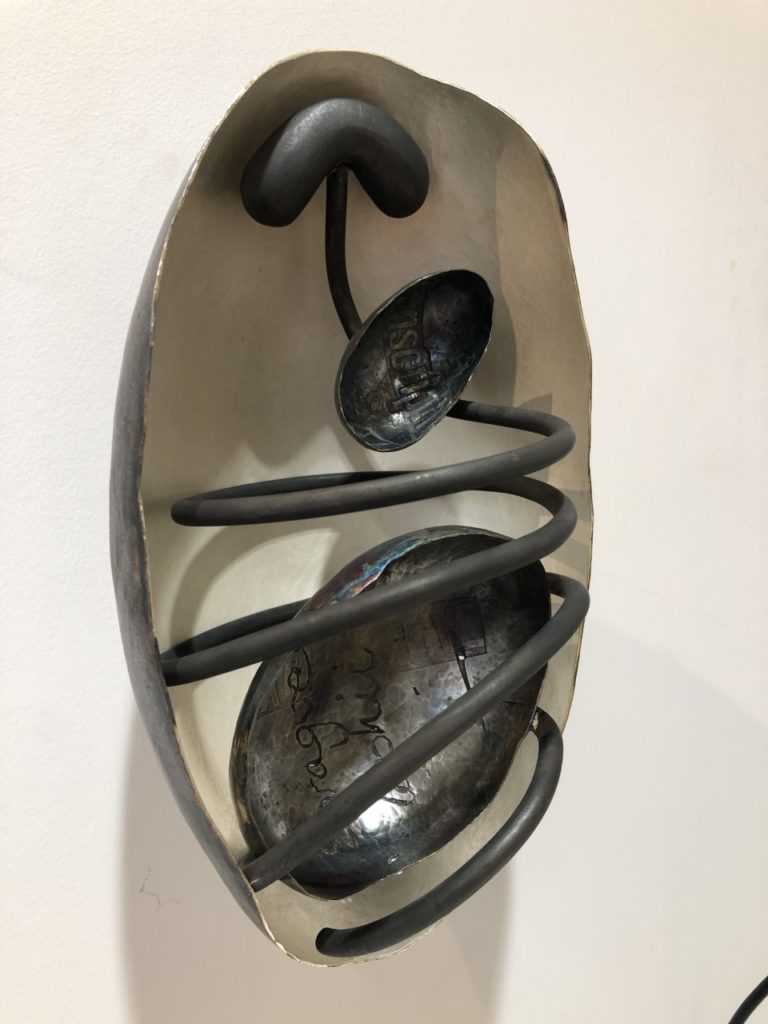
Talking about the project, Jacky said: “I have a passion for learning, working with others and making, so the ‘Understanding Microsporidia parasites’ commission was the perfect project for me to work on.
“At the beginning of the project I wasn’t sure how to pronounce ‘microsporidia’, nor did I understand the impact these parasites have on both humans and animals. I was fascinated by the beautiful, but deadly stages of germination, with coiled up polar tubes ready to pierce other cells.
“The final piece illustrates this development through five hand-raised forms, containing etched and pierced text. These words invite the viewer to consider the subject matter, without attempting to explain the complexities, but hopefully intrigue them enough to spend time themselves to investigate and try to understand microsporidia.”
Dr Becky Conners, Postdoctoral Research Associate at The University of Exeter, said: “This collaboration with Jacky has been really inspiring and has made me think about my research in a completely different way. I am thrilled with the final piece; it looks beautiful and intriguing, and I hope it will cause people to stop and look.”
This work was generously supported by the Wellcome Trust Institutional Strategic Support Award (WT105618MA) via a Translational Research Exchange @ Exeter (TREE) award to Dr Conners to combine a range of imaging and cell biological techniques with mathematical modelling to better understand how microsporidian parasites enter host cells.
The interdisciplinary research team also included Bryony Williams, Bertram Daum, David Richards, Joe Costello and Kirsty Wan; from Biosciences, LSI, Mathematics and Physics at The University of Exeter. This art-science collaboration was part of the project, with the aim to create a piece of work to provoke discussion about how microsporidia, and other complex cells work.


